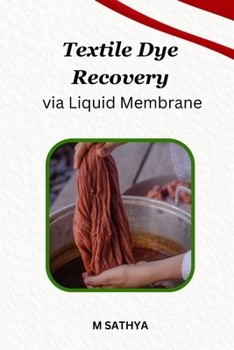Textile Dye Recovery via Liquid Membrane
Textile dyeing is a significant contributor to water pollution and environmental degradation. Textile industries release wastewater containing various dyes, chemicals, and heavy metals, which can pose a severe threat to aquatic life and human health. To minimize the negative impact of textile dyeing on the environment, various techniques have been developed to recover and reuse these dyes.
Liquid membrane technology is one such technique that has gained significant attention in recent years for its efficiency in textile dye recovery. In this process, a liquid membrane is used to extract and transport dyes from wastewater to a separate phase, where they can be concentrated and reused.
The liquid membrane used in this process typically consists of an organic solvent, a carrier agent, and a surfactant. The organic solvent serves as a medium for the transport of dyes, while the carrier agent selectively binds to the dyes and facilitates their movement through the membrane. The surfactant is used to stabilize the membrane and improve its permeability.
The liquid membrane technique offers several advantages over traditional dye recovery methods. Firstly, it is a highly selective process, which means that only the desired dyes are extracted from the wastewater, leaving behind other contaminants. Secondly, it is a cost-effective method that can be easily scaled up for industrial applications. Thirdly, it is a sustainable approach that reduces the environmental impact of textile dyeing.
One of the key challenges in liquid membrane technology is the selection of the appropriate carrier agent. The carrier agent should have a high affinity for the target dyes and should be stable and non-toxic. Several carrier agents have been used for textile dye recovery, including di-(2-ethylhexyl) phosphoric acid (D2EHPA), trioctylphosphine oxide (TOPO), and calixarenes.
The performance of the liquid membrane technique is also influenced by several operational parameters, including the membrane composition, the flow rate, the pH, and the temperature. Optimization of these parameters is crucial to achieving high dye recovery efficiency.
In conclusion, textile dye recovery via liquid membrane technology is a promising approach for mitigating the negative impact of textile dyeing on the environment. This technique offers several advantages over traditional dye recovery methods, including high selectivity, cost-effectiveness, and sustainability. The selection of appropriate carrier agents and optimization of operational parameters are key factors that determine the efficiency of the liquid membrane process. With further research and development, liquid membrane technology has the potential to become a widely adopted approach for textile dye recovery in the future.





